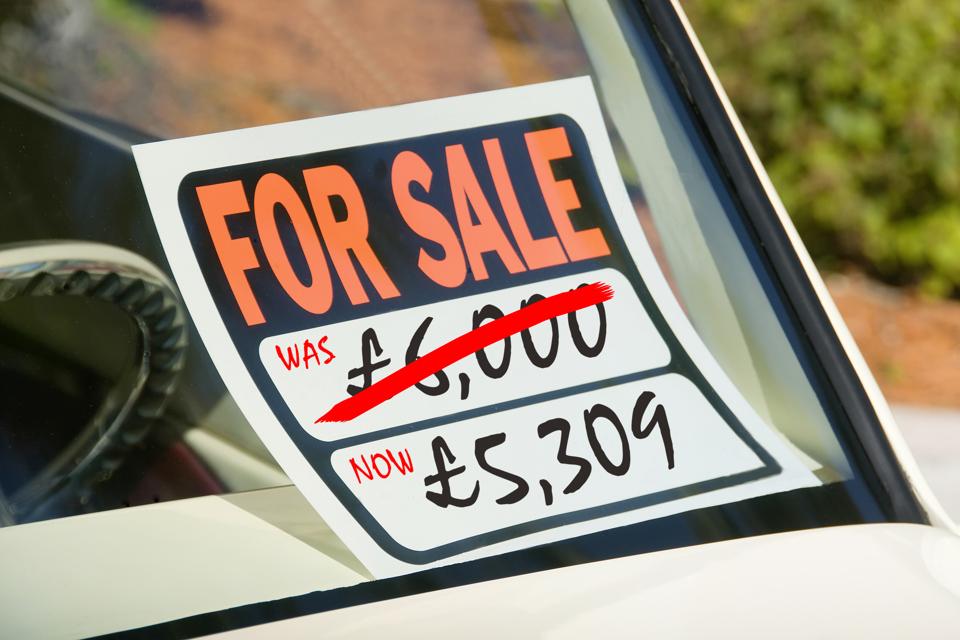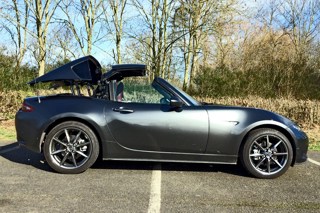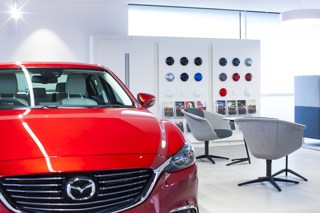1: Stock profile tools
Taking advantage of sophisticated tools can help to identify which models are most likely to sell in a particular area.
Using data from third parties to determine the best stock profile is being adopted far more widely in the sector. However, dealers also have such information in their dealership management systems (DMS). The trick is to extract and analyse it.
According to CDK, which provides its Autoline DMS solution to more than half of all UK franchised dealerships, dealers with a DMS that is integrated across every business function and across multiple dealer group sites will be best placed to manage used car stocks intelligently. Group-wide profiling enables the quick identification of fast-moving stock and helps prevent overstocking with slow-moving, less profitable vehicles.
By identifying and analysing recent historical trends in used car sales and profit patterns, such as model classes and price brackets most in demand, dealers can tailor their forecourts accordingly.
2: Stock pricing
Accurate pricing means cars sell more quickly, increasing stock turn, leading to more sales. However, according to Auto Trader research on 211,000 cars, more than half, 116,000, were reduced in price by an average of £691 over four weeks.
Nick King, Auto Trader’s market research director, said: “That’s a sizeable chunk of money. The average franchised dealer turns stock 10-12 times a year. By increasing stock turn to 13, the impact on the bottom line grows exponentially. Selling more cars, even if margins are slimmer, generates more revenue.”
Jemca Car Group introduced a 60-day stocking policy six months ago and Paul Meller, general manager at its Toyota Edgware Road site in north London, said vehicles in stock for 90 days are now practically non-existent and he believes there will be a gradual reduction in days in stock as the group reaches its target.
However, with prices subject to market fluctuations, dealers need to act like stockbrokers –analysing prices on a daily basis and making adjustments if necessary. CAP’s retail and consumer specialist Philip Nothard said: “If you have a car in stock for 25 days with no clicks, don’t leave it until 90 days to do something about it.“
Meller’s team monitors daily, making adjustments to price, description and imagery if there are no or few page views: “Sales managers need to be more disciplined and less emotional; a car is simply a commodity.”
3: Integrate new and used
Consider the effect of new car registrations on the future used car operation as well as resisting the temptation to chase new car sales at the expense of used cars.
The popularity of the PCP and the shorter ownership cycle could have a dramatic impact on the used market. Manufacturer finance deals are often concentrated on a particular model, specification and colour with agreements over a similar timeframe, so dealers need to be ready to absorb these cars on their return.
CAP’s Nothard said: “Dealers need to be thinking about how they will manage 50 very similar cars coming back in two years’ time to avoid a situation of over-supply.”
4: Part-exchange vehicles
Part-exchanges are a valuable stock source. BCA has created bespoke systems enabling dealers to view part-exchanges within the group thereby retaining more vehicles ‘in-house’. Manheim’s Seller Advance automates the vehicle appraisal and valuation process, making it faster and more accurate to facilitate more deals. Incorporating Deal Maker, it also provides network access to the group’s part-exchanges boosting the chances of a sale and at the best price.
“With margins ever tighter on new car sales, you can lose the profit in the deal if you get the value wrong on the part-exchange,” said Darren Wiseman, Manheim’s general manager of valuation services.
5: Transporting vehicles more efficiently
Car dealers can save money transporting used vehicles from one dealership to another or to auction by taking advantage of available slots on other transporters. Movex operates a portal which matches collection and delivery requirements with transporter and driver availability. Daren Jones, CEO, said: “Filling an empty slot on a return load can mean a reduced cost for a dealer. We’ve seen dealers save approximately 30-40% on each vehicle movement.”
6: Sales process
An elongated qualifying process, including obtaining personal information and part-exchange evaluation before facilitating a test drive, is out of date.
Auto Trader’s King said: “All consumers want to do is test-drive the car. If dealers can get people in cars quicker, they are more likely to convert.”
At Jemca’s Toyota Edgware Road, the goal is to complete the sales process in one day. Meller estimates 15% of the dealership’s used car sales result in same-day delivery, unthinkable even just a few years ago. He said: “Nine out of 10 customers arrive in the showroom knowing exactly what they want and all they want to do is have a look, test drive and hopefully buy.”
7: Personal touch
Customer service has never been so crucial a differentiator. Auto Trader’s research regularly asks consumers for ‘delighters’ and ‘disappointers’. Not surprisingly, touches such as collecting a car-buyer from the train station on handover day and even reimbursing the fare makes dealers stand out. Equally, ‘disappointers’, such as calls that are never responded to, turn customers off.
Video supplier CitNow’s sales director Gordon Grant recommends emailing a video introducing the dealership as well as details of the car of interest to establish a stronger relationship when contact is first made, thereby increasing the likelihood of a physical visit.
When would-be buyers do make a call, dealers should know everything about their stock, but in some cases they don’t. According to Andy Coulthurst, managing director of Motors.co.uk, it is this lack of knowledge that leads to a lack of excitement in the call. He suggests a stock walk with the sales manager every morning to bring sales executives up to speed.
8: Speed of response
Dealers need to be well placed to help consumers when they are doing their research, particularly in the evenings, so tools such as live chat and direct emails are essential. Recent Motors.co.uk trials have shown one in three online leads still go unanswered by dealership staff despite being an improvement on 2012 when more than half were ignored. Encouragingly, dealers are responding faster – 23% within one hour. Dermot Kelleher, director of marketing and business intelligence, said there is still scope to improve the quantity and quality of responses.
Motors.co.uk’s Coulthurst says the used car market has changed, with consumers now used to driving a newer, more highly specified car than they would have done for the same monthly outlay five years ago and they will be reluctant to take “a perceived step backwards”.
“This means it is even more important for used car dealers to demonstrate knowledge, provide ‘out-of-hours’ access and present the car buyer with options that they may not have considered,” he said.
The website’s ‘out-of-hours’ email lead tool, Night Owl, allows consumers to alert the dealer that they wish to reserve the car immediately when the business opens again in the morning. Motors said it now averages about 47 reservations a day, up from 20 to 25 reservations a day 12 months ago.
Marc Jaconelli, director at premium used car retailer Romans International, said: “The big thing we do exceptionally well is answer the phone. If you call and ask to speak to a salesman, we put you straight through, we don’t take all your details and put you off before you have even had chance to discuss the car.”
9: Finance
The consumer used car finance market grew by 14% in 2014, according to the latest figures from the Finance and Leasing Association, funding a record 1.05 million vehicle sales.
However, in the same way consumers are researching vehicles online, they are also selecting their funding options. Simon Ryan, managing director of digital marketing agency Social Advisors, says a one-day snapshot of 40,500 internet searches for ‘car finance’ reflects the high level of interest that dealers can exploit by providing information browsers are seeking and drive traffic to their website.
Dealers can publish the ratio of finance acceptances achieved by the showroom, or could blog on the pros and cons of PCP, HP, and leasing.
Meanwhile, online finance calculators can help make funding more transparent, providing consumers with the opportunity to compare and contrast in the comfort of their own homes. In fact, James Tew, CEO at iVendi, believes the provision of consumer motor finance under the governance of the Financial Conduct Authority will more closely resemble the mortgage sector, leading to higher levels of consumer trust and therefore more sales.
10: Upselling
Products such as the extended warranty and GAP insurance have become part of the salesperson’s armoury, even with add-on products such as GAP coming under scrutiny from the FCA and subject to new regulations later this year. Dealers should, as a matter of course, be offering used car customers as many add-on products as possible, such as paint protection, digital radio kits and other accessories while service plans offer a potentially untapped area.
According to service plan provider EMaC, service experience influenced 49% of customers on their choice of retailer when it came to buying their next vehicle, but its figures suggest only 15% of used car customers are offered service plans.
11: Marketing and CRM
Dealers should have an extensive marketing portfolio, incorporating specific PPC campaigns, retargeting and highly targeted email campaigns as well as the tried and tested.
Tim Smith, group strategy director at GForces, said: “Most dealers will undertake SEO campaigns and promote vehicles on classified sites, but they should also adopt a more agile approach.”
The temptation to communicate to vast swathes of the database remains, but multiple and disparate systems can lead to a lack of integration between CRM tools and the DMS while data is often inaccurate. Smith believes the appetite to create a single
customer view that lends itself to more proactive marketing is huge and will continue to grow.
12: Website
Websites need to resemble a virtual forecourt, so vehicles need to be presented in the very best light, from images (a minimum of 20 although in the US 40 is common, says Auto Trader), to description.
“We know that 50-60% of car buyers do not make any contact with the dealership prior to making a visit. It makes the digital forecourt even more important than ever,” said King. “Highlight the car’s unique characteristics, as the default description is likely to include electric windows and power steering, features of practically every car.”
Dealers should also consider mobile optimisation, even over a responsive website. These can take longer to load, turning off increasingly impatient browsers. Many dealers still need to address the basics, such as incorporating Google Maps. Meanwhile, the ‘personality’ of the business has to shine through on other platforms, such as Facebook, while peer reviews are crucial in the decision-making process.
13: Tools
A variety of online tools are available to enhance websites, such as GForces’ instant online vehicle evaluations, which uses the CAP valuation tool. About 40-50% of GForces’ client base incorporates the tool, generating 40,000 valuations a month. Dealers can typically expect to convert one in five of these at an average £3 per lead. One independent client converts 22% of its valuation leads into sales, said GForces. Online credit check may also improve conversion rates, with GForces reporting an average of 30%.
14: Video
A video tour of the used vehicle can create high levels of trust, as well as demonstrating fundamentals such as how well the engine starts, according to Grant at CitNow.
“The message of transparency conveyed through a ‘warts and all’ video demo of a used car also bodes well for future custom,” he said. “Customers are far more likely to bring their car back to the dealership they’ve grown to trust.”
Meanwhile, Google places greater emphasis on video content, making it a vital part of SEO strategy with uploading short videos of used cars for sale on the forecourt a potent web traffic driver.
15: Don’t ignore the trade
Jon Mitchell, sales director at Autorola UK, advises dealers to upload vehicles for sale on online auction portals at the same time they appear on the forecourt. “In our experience, those proactive dealers who are selling both to the consumer and trade at the same time are now retaining more of their part-exchanges,” he said. “They are being rewarded with selling more cars, which maintains a high level of stock turn with increased profits.”
Dealers should also be forging relationships with other franchised dealers and independent businesses to boost additional sales and aftersales opportunities. Jaconelli, at Romans, said: “Sometimes we have to use the franchised sector to service our vehicles, but we are often viewed as a threat instead of an opportunity to do business.”


















Izzy - 06/04/2018 09:47
This is such a great article! I love the detail you've gone into - honestly it's such a help for rookies like me who have literally no idea about cars or how to sell them at all! Would you recommend doing the car sales yourself then overall? The thing is I can't decide between doing it myself or just going through a company. I feel both have certain perks! Ideally I like the idea of going through a company because it lifts a lot of responsibility from my shoulders (I also don’t need to part exchange as I have already got another vehicle). The problem is though that most companies seem to charge lots of 'hidden' admin fees and expenses like that which I simply can't afford! Do you know of any good and reputable companies I could sell my car to? I read in an article recently about a company called Sell Your Car 2 Jack. have you heard of them? And if so do you know if they're meant to be good? I'm really at sea with the whole vehicle/car/garage thing so any advice you could offer me would be amazing!